Lilly Rivlin: Artist as Truth Seeker
By Marcia G. Yerman
Every era has its moments that are written and evaluated by “historians.” Creatives capture those same events through the prism of nuance, drama, and emotion. Lilly Rivlin, now 84, is one such artist. A contemporary of pioneering feminists, she was on the ground to document their contributions to the upheaval of the 1970s, when women were beginning to realize that the problem wasn’t them.
Rivlin’s identity as an Israeli-American has also uniquely positioned her to be an active participant in seeking out a path of reconciliation in the Israel/Palestine conundrum. Her particular sensitivities paved the way for the forthright corrective statement in her 2005 interview with Amy Goodman, when she noted, “I’m Palestinian-born. That makes a difference to establish that; I was born before the state of Israel.” Her family, the Rivlins, came to Jerusalem in 1809. Their recorded genealogy originated in Prague. By the 17th century, the Rivlin name was established in Lithuania. It is now deeply rooted throughout Jerusalem, where Rivlins grew up surrounded by extended family. The clan became so large they needed their own synagogue. There is a street named after Joseph Rivlin (1838-1897), who established the first Jewish neighborhoods outside the old city walls. One of the areas he founded was Me’ah She’arim. The current president of Israel, Reuven Rivlin, is Lilly’s first cousin.
Lilly’s family moved to the United States when she was 8. Yet, as she stated in the 1983 film The Tribe, “I am drawn like a moth to the heat of the tribe.”
In that documentary, she records a family reunion in Israel for 2,500 relatives, only one-fourth of her extended 10,000-member clan. Rivlin doesn’t shy away from including a scene with one of her kin based in England, who changed his last name and appears less than ebullient about his lineage. “I feel constrained in Jerusalem,” he informs her. He comments on the “Rivlins making a fuss about themselves.” When I asked Rivlin about him, she told me that he ended up back in Israel. With a touch of humor, she said, “Rivlins leave, but always come back.”
Such auspicious connections to Israel’s history don’t stop Rivlin from posing questions that reflect her perceptions of inequity. During a break in the festivities, Rivlin visits the Mount of Olives, home to Jewish graves for over three millennia. She inquires wryly, “Where are the women?”
Women
Whether recording feminist history in America or featuring Israeli and Palestinian women in dialogue, Rivlin sees them as the key to shifting the equation and taking the lead.
Rivlin introduces women on both sides of the Israeli/Palestinian conflict in Can You Hear Me? (2006). Each side demands an end to the violence while looking to engage in other forms of struggle. The audience is introduced to Israeli groups like Machsom (Checkpoint) Watch and Women in Black – who are involved in ending the Occupation. They are not afraid to ask, “Who lived in that house before 1948?”
They are also women brought together by mutual loss and grief. Nadwa Sarandah and Robi Damelin are founders of the Parents Circle Family Forum. They emphasize that “all mothers are the same.” Orthodox activist Leah Shakdiel (now an ordained rabbi), who has been a constant in the religious peace movement, doesn’t shy away from using the term “apartheid road.”
In her films profiling American feminists, Rivlin is repeatedly, drawn to elevating female change-makers and bringing them out from under the radar. The advocacy work of these subjects is interrelated. It’s all about organizing and making change.
On the occasion of Rivlin receiving the first Tikkun Olam award from Partners for Progressive Israel on March 7, I was able to interview her. (Full disclosure: It’s the second event of Partners’ Women’s Initiative, which I’m a part of.)
Our conversation covered a full range of topics, from how she had morphed from a journalist to a filmmaker (“I always liked the visual.”) to Bibi Netanyahu (“It’s time for him to leave.”)
The conversation was vibrant, as Rivlin readily shared opinions and gave insights into those whose stories she had chosen to examine. “They were all women I respected, admired, and learned from,” she said.
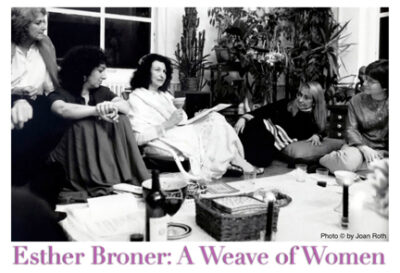 Esther Broner: A Weave of Women (2013) outlines Broner’s efforts to reclaim women’s role in Judaism. She was the co-author (with Naomi Nimrod) of the first Women’s Haggadah (1975). Broner also conceived the first “female seder.” Rivlin attended yearly and saw it as not only a revelation but as a metaphor. Guests included Bella Abzug, Letty Cottin Pogrebin, and Gloria Steinem. In reaction to centuries of exclusion, Broner wrote a text with the belief and motivation that “equality had to extend to the traditions of Judaism.” It was a transformative experience that reflected Broner’s insistence on “fairness and community” and a “passion for justice.” As Broner asserted, “When we walked through the desert, we left no footprints…I don’t want to be invisible.”
Esther Broner: A Weave of Women (2013) outlines Broner’s efforts to reclaim women’s role in Judaism. She was the co-author (with Naomi Nimrod) of the first Women’s Haggadah (1975). Broner also conceived the first “female seder.” Rivlin attended yearly and saw it as not only a revelation but as a metaphor. Guests included Bella Abzug, Letty Cottin Pogrebin, and Gloria Steinem. In reaction to centuries of exclusion, Broner wrote a text with the belief and motivation that “equality had to extend to the traditions of Judaism.” It was a transformative experience that reflected Broner’s insistence on “fairness and community” and a “passion for justice.” As Broner asserted, “When we walked through the desert, we left no footprints…I don’t want to be invisible.”
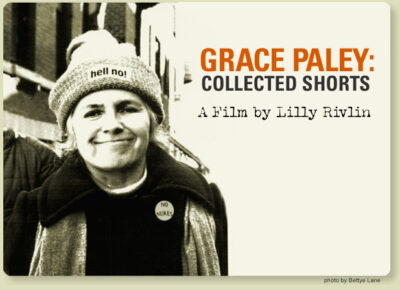 In Grace Paley: Collected Shorts (2010), the author and anti-war activist (Paley traveled to Vietnam in 1969) speaks about the importance of being authentic and “writing in your own voice.” For her, this meant opening a window to women’s stories. To Paley, politics, poetry, and story-writing were intertwined. She underscored that “all issues of oppression are connected” and why it was essential to “think of militarism and war in feminist terms.”
In Grace Paley: Collected Shorts (2010), the author and anti-war activist (Paley traveled to Vietnam in 1969) speaks about the importance of being authentic and “writing in your own voice.” For her, this meant opening a window to women’s stories. To Paley, politics, poetry, and story-writing were intertwined. She underscored that “all issues of oppression are connected” and why it was essential to “think of militarism and war in feminist terms.”
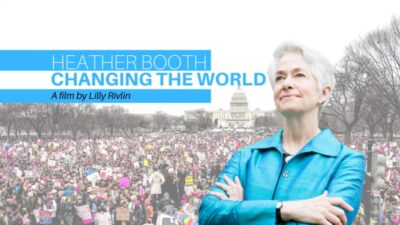 When Rivlin turned her camera on Heather Booth in Heather Booth: Changing the World (2017), it was an act of homage to the power of organizing. Rivlin showed Booth’s persistence and evolution – from the civil rights movement and the Freedom Summer Project – to inside the Beltway adviser to Senator Elizabeth Warren.
When Rivlin turned her camera on Heather Booth in Heather Booth: Changing the World (2017), it was an act of homage to the power of organizing. Rivlin showed Booth’s persistence and evolution – from the civil rights movement and the Freedom Summer Project – to inside the Beltway adviser to Senator Elizabeth Warren.
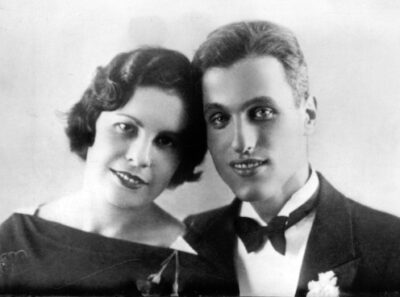 However, it is Gimme a Kiss (2000), Rivlin’s uncompromising examination of her primary family’s dynamics, that delivers the ultimate gut punch. Constructed within a diaristic framework, Rivlin posits, “Who of us really knows our parents?” She looks unflinchingly at how her personal history has informed her choices. Without pause, Rivlin directly asks her father, “Why don’t you get along with any of your children?” In this film, perhaps more than any other, she functions in the role of “truth seeker.”
However, it is Gimme a Kiss (2000), Rivlin’s uncompromising examination of her primary family’s dynamics, that delivers the ultimate gut punch. Constructed within a diaristic framework, Rivlin posits, “Who of us really knows our parents?” She looks unflinchingly at how her personal history has informed her choices. Without pause, Rivlin directly asks her father, “Why don’t you get along with any of your children?” In this film, perhaps more than any other, she functions in the role of “truth seeker.”
I asked Rivlin about what advice she would give to today’s generation of young women. Her response was succinct. “Fight for your rights. Be very conscious. Be political.” She stressed, “I hope they don’t get too complacent. Women can never be too complacent.”
When I probed her about her legacy, Rivlin mused, “I look over all the things I did and say, ‘It’s okay, Rivlin. You left a legacy.’”
Our conversation ended with a reflection on the Israeli/Palestinian situation. We spoke about the two matriarchs, Sarah and Hagar. Ironically, it was a topic Rivlin had hoped to develop for a film.
“My life’s work has been to go back and forth between Palestinians and Israelis, to find ways that we can work together. We have more in common than what divides us.
“Rivlin paused and offered her final thoughts: “We have to keep on trying. There is no choice.”
___
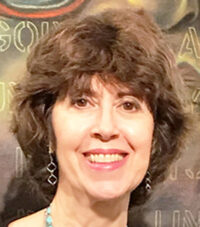
Marcia G. Yerman is a writer, artist, and activist based in New York City.

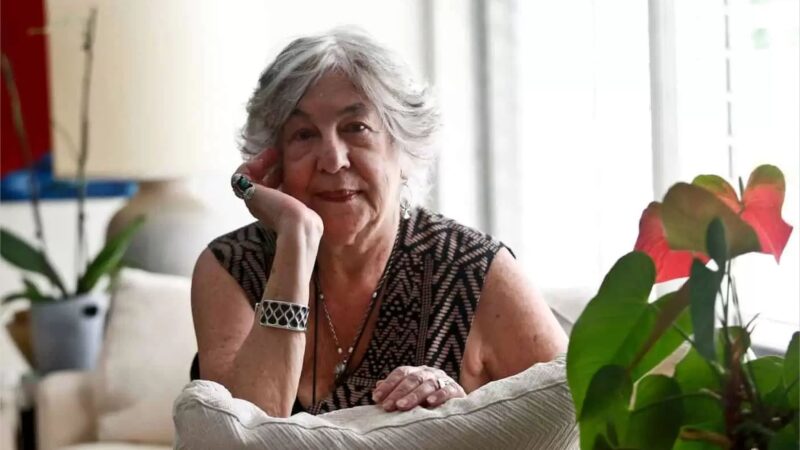

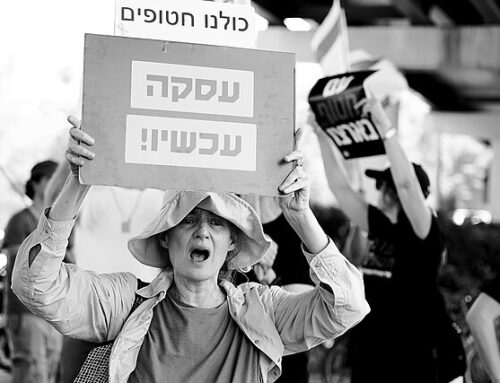

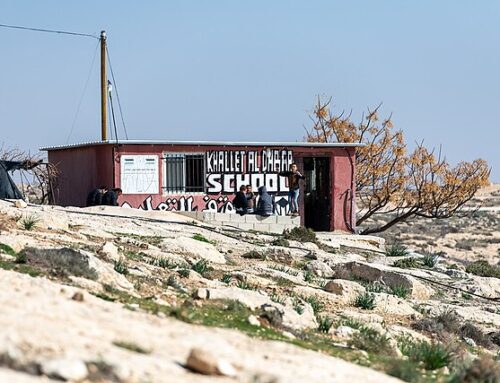
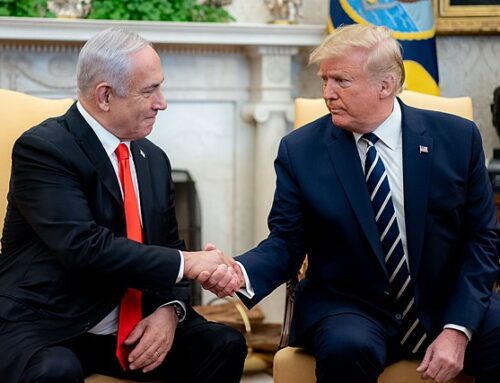
This is beautifully written and a very accurate portrayal of Lilly Rivlin, who I have had the pleasure of knowing for over 40 years.
And what about Golda ????